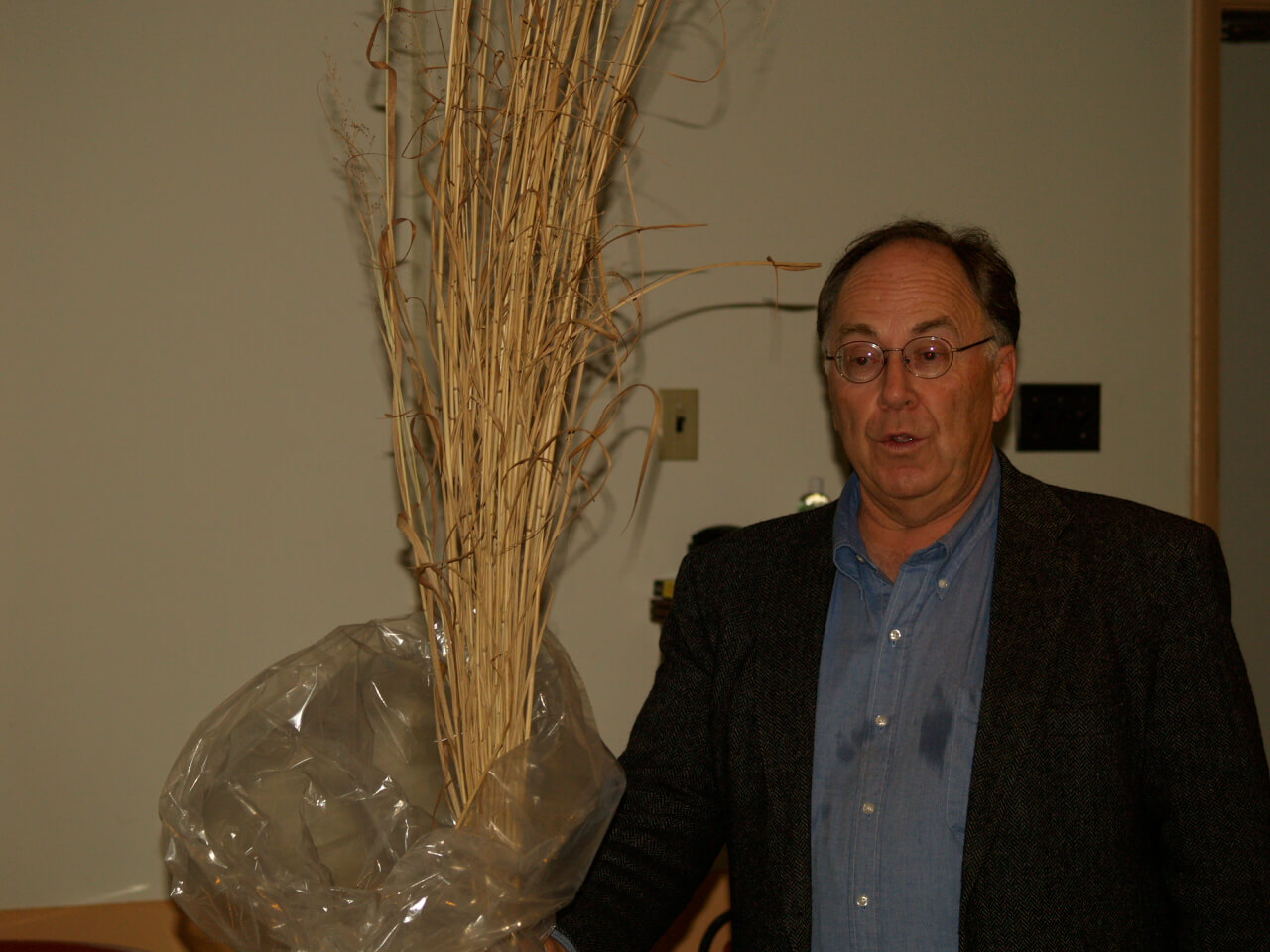COURTHOUSE — While it has only been grown in small quantities for test purposes in this county, Switchgrass could be a crop for alternative energy with the potential to heat greenhouses or a school buildings.
Zane Helsel, a specialist in alternative energy from Rutgers University, presented a program on Switchgrass April 1 at the Cooperative Extension of Cape May County. The audience was a mix of farmers and environmentalists.
Helsel said determining how well the tall, warm season grass would grow in this county was still in the preliminary stages. He said Switchgrass was a perennial, drought tolerant and could be grown on marginal land.
It does not require as much nitrogen as a corn crop and is harvested once per year, said Helsel. Switchgrass grows densely and provides habitat for birds, rabbits, toads and frogs.
The energy output versus energy input for Switchgrass is 13:1 meaning you produce 13 times more energy from the crop than you put in which exceeds soybeans at 3:1 or sugarcane at 8:1. When burned, such as in a furnace, Switchgrass produces 7,500 BTU’s per pound.
Helsel said 1 ton of Switchgrass hay produced the same amount of energy as 100 gallons of fuel oil. It would require 400 tons of Switchgrass to heat one acre of greenhouses for one year, he said. Switchgrass would produce a little less than half the energy produced by fuel oil on a pound for pound basis, said Helsel.
There are two types of Switchgrass, one for lowlands and another for uplands. It can grow six to seven feet tall in one year, he said. The lowland variety can be injured from a very cold winter.
An upland variety called “High Tide,” was developed to tolerate wetter conditions and has some salt tolerance.
Switchgrass seed averages $17 per pound. Helsel said the bottom line is a cost of about $90 per ton to plant and harvest which could fetch a price of $200 per ton to the farmer.
The Obama Administration may make carbon credits mandatory. Helsel said growing Switchgrass for carbon credits outside of Chicago only yields about $3 to $4 per acre. In Europe, where carbon credits are mandatory, it jumps to $25 per acre.
There are 70 stoves on the market that will burn Switchgrass pellets to heat a home or a shop, he said. Helsel a project in New York was looking at heating schools.
Chris Miller, of the U.S.D.A. Plant Materials Center in Swainton, said Switchgrass has been grown at that location for four years primarily for seed production. The Carthage variety of Switchgrass, which is an upland type from North Carolina, yielded an estimated 5.3 tons per acre, he said.
Coastal Panicgrass, which grows on sand dunes on barrier islands, produced 7.5 tons per acre while the “Timber” variety of Switchgrass produced 10.3 tons per acre, said Miller.
What about growing Switchgrass on a five to seven acre farm? Helsel said such a farmer would need to form a “mini cooperative” to plant 300 to 500 acres.
Helsel quoted a report from the U.S. Department of Energy (DOE) that suggested if one billion tons of biomass was available, we could replace one third of the liquid petroleum we use in this nation.
“As of 2004, only 3 percent of America’s energy consumption was coming from biomass and most of that was forest and wood products, some corn and grain for ethanol,” he said.
That figure has increased since 2004, said Helsel.
DOE said sources such as grains to biofuel, soybeans, wheat straw, corn plants, all current sources of biomass add up to two-thirds of a billion tons. The remaining needed bio mass to reach 1 billion tons would come from perennial crops such as Switchgrass, he said.
Biomass cannot be burned in your car’s gas tank, it needs to be converted to another form which takes energy to produce the conversion. The density of Switchgrass can be increased by converting it into pellets which can be burned in a furnace or stove, said Helsel.
Switchgrass and other biomass can be converted to liquid fuels to run vehicles through thermo chemical conversion and fermentation which turns starches and sugars into ethanol fuel.
“Winemaking is biomass ethanol production,” said Helsel. “We just keep the ethanol mixed in with the fruit juice and drink it.”
He said Brazil has led the way in converting crops to ethanol.
“They have a famous saying in Brazil, “They drink the best and drive the rest,” said Helsel.
Biomass crops can also be digested by microbes producing natural gas.
A major drawback for Cape May County creating an ethanol producing facility: 15,000 to 17,000 contiguous acres of farmland would be needed to grow enough crop for production, said Helsel. He said it does not make good economic sense to transport biomass any distance.
“If we had a tanker load of fuel oil driving down the highway, it would take about 20 flatbeds (trucks) to get the same energy down the highway with biomass hay,” said Helsel.
While used restaurant fry oil can be used to run vehicles, Helsel said there are not enough restaurants in the state “to make a big dent in the need to replace fossil fuels by just using McDonalds and Burger King French Fry oil.”








